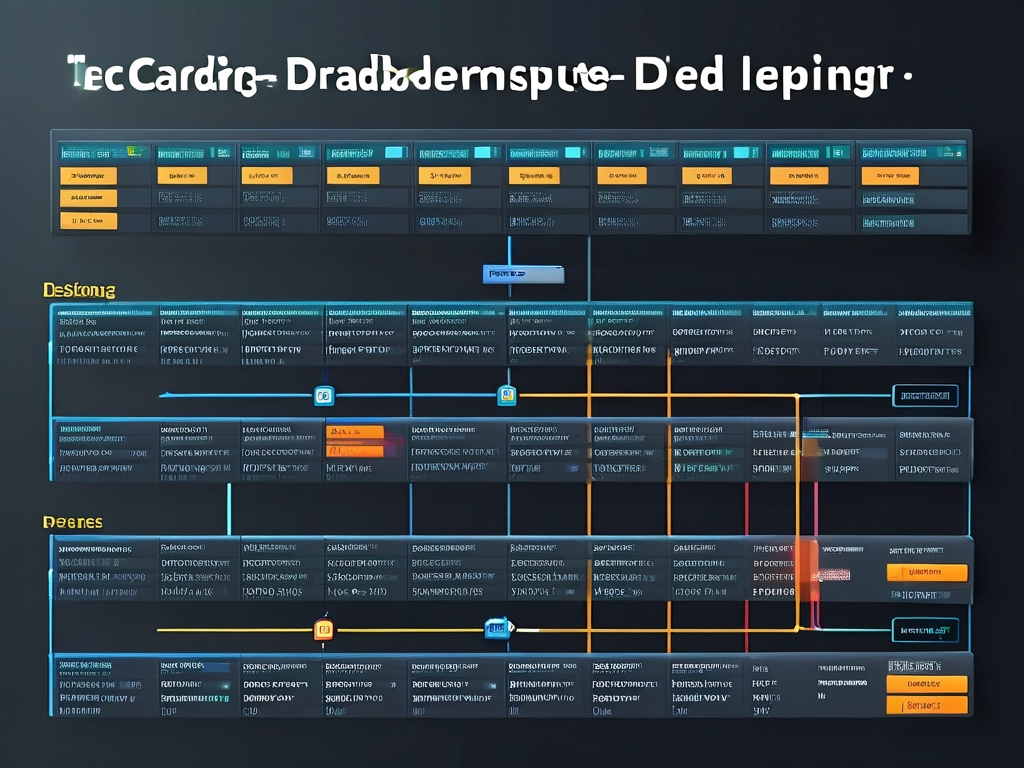The evolution of database systems has reshaped how organizations manage and leverage data. Advanced application development tools now play a pivotal role in streamlining workflows, optimizing performance, and enabling scalable solutions. This article explores cutting-edge tools and methodologies for modern database-driven development, with practical examples to illustrate their capabilities.

Core Tools for Modern Database Development
1. Integrated Development Environments (IDEs)
Tools like DBeaver and DataGrip provide unified interfaces for database design, query optimization, and version control. These IDEs support multiple database engines (MySQL, PostgreSQL, MongoDB) and offer features such as:
-- Example: Cross-database query in DBeaver SELECT * FROM oracle_table UNION ALL SELECT * FROM postgres_table;
This interoperability reduces context switching and enhances productivity for developers working in hybrid environments.
2. ORM Frameworks
Object-Relational Mapping tools like SQLAlchemy (Python) and Hibernate (Java) bridge the gap between application code and database schemas. By abstracting SQL operations, they enable type-safe queries and reduce boilerplate code:
# SQLAlchemy example
from sqlalchemy import create_engine, Column, Integer, String
from sqlalchemy.ext.declarative import declarative_base
Base = declarative_base()
class User(Base):
__tablename__ = 'users'
id = Column(Integer, primary_key=True)
name = Column(String)
Advanced Optimization Techniques
Query Plan Analyzers
Tools like pgAdmin4 (PostgreSQL) and MySQL Workbench visualize execution plans, helping developers identify bottlenecks. For instance, a poorly indexed table might show full-table scans in the plan, prompting index creation:
EXPLAIN ANALYZE SELECT * FROM orders WHERE customer_id = 450;
Real-Time Monitoring
Solutions like Prometheus + Grafana provide dashboards tracking query latency, connection pools, and cache hit ratios. This real-time visibility enables proactive performance tuning rather than reactive firefighting.
Emerging Trends in Database Tooling
AI-Powered Assistants
Next-gen tools integrate machine learning for query optimization. Microsoft’s Azure SQL Database uses AI to recommend index changes, while startups like MindsDB enable predictive queries:
-- Predictive query example SELECT * FROM sales JOIN mindsdb.sales_forecast WHERE sales.item = 'WidgetX';
Blockchain-Backed Databases
Tools like BigchainDB combine blockchain immutability with NoSQL flexibility, ideal for audit-critical applications. Developers can implement tamper-evident records through simple API calls:
# BigchainDB transaction example
asset = {'data': {'contract': 'NDA_2024'}}
tx = bigchaindb.transactions.fulfill(
asset, metadata={'status': 'signed'})
Security-First Development Practices
Modern tools emphasize security through features like:
- Automatic SQL injection detection in IDEs
- Role-based access control (RBAC) templates
- Column-level encryption wizards
For example, Vault by HashiCorp integrates with databases to manage dynamic credentials, rotating access keys hourly without disrupting applications.
The Future Landscape
As edge computing gains traction, tools like SQLite with WASM enable client-side database operations in browsers. Meanwhile, Quantum Database Prototypes are emerging, requiring entirely new toolchains for quantum query optimization.
Developers must balance innovation with pragmatism. While advanced tools offer powerful capabilities, their value lies in solving real business problems – whether that’s reducing e-commerce cart abandonment through faster queries or preventing fraud via real-time pattern detection.
The key to mastery lies in continuous experimentation. Allocate time weekly to test new database tool features, participate in open-source communities, and document learnings through team knowledge-sharing sessions.





